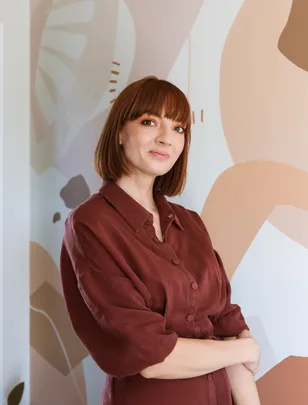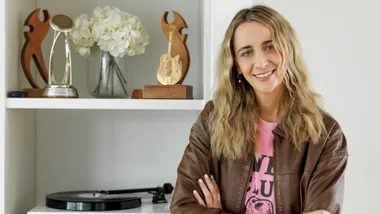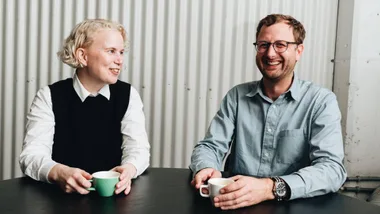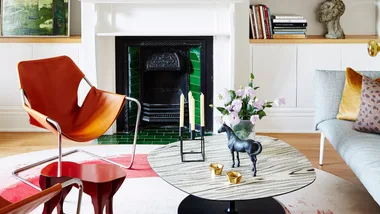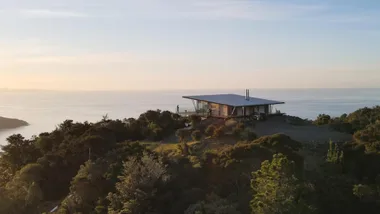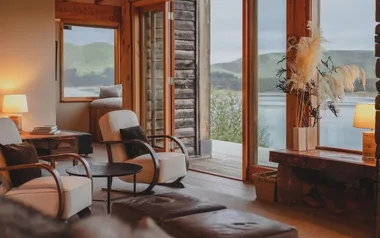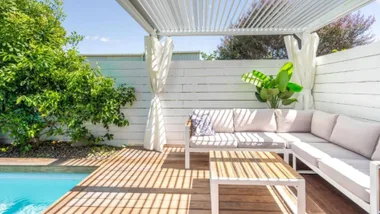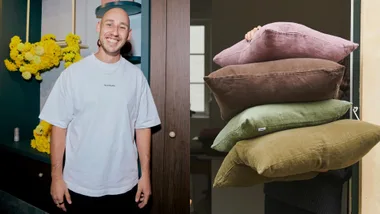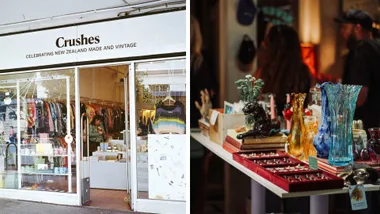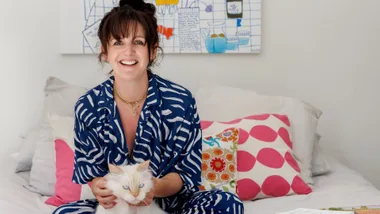A Papamoa artist has discovered that when it comes to paint – bigger is better

Six years ago, Jasmine Kroeze’s creative brand Pinch & Punch was an ethical fashion label. However, when fashion success resulted in more admin and less hands-on work – Jasmine’s bread and butter – she made the difficult decision to close the label. “I have no regrets about starting the label and zero regrets about closing it,” she says. “Definitely nota failure, just another learning experience.”
But the closure didn’t mark the end of Pinch & Punch, rather it led to Jasmine putting on other creative hats – textile design, art, illustration, branding and typography – although, it’s her paint work that has become the poster child for the brand. Her application of abstract shapes and bold hues on large (sometimes, extremely large) canvases are instantly recognisable, and undeniably popular.
You’ll find Jasmine’s work on plywood panels and canvas, on the sides of buildings, and – if you were lucky enough to find one – on little wooden boards hidden around the streets of Papamoa during the Easter Art Hunt.
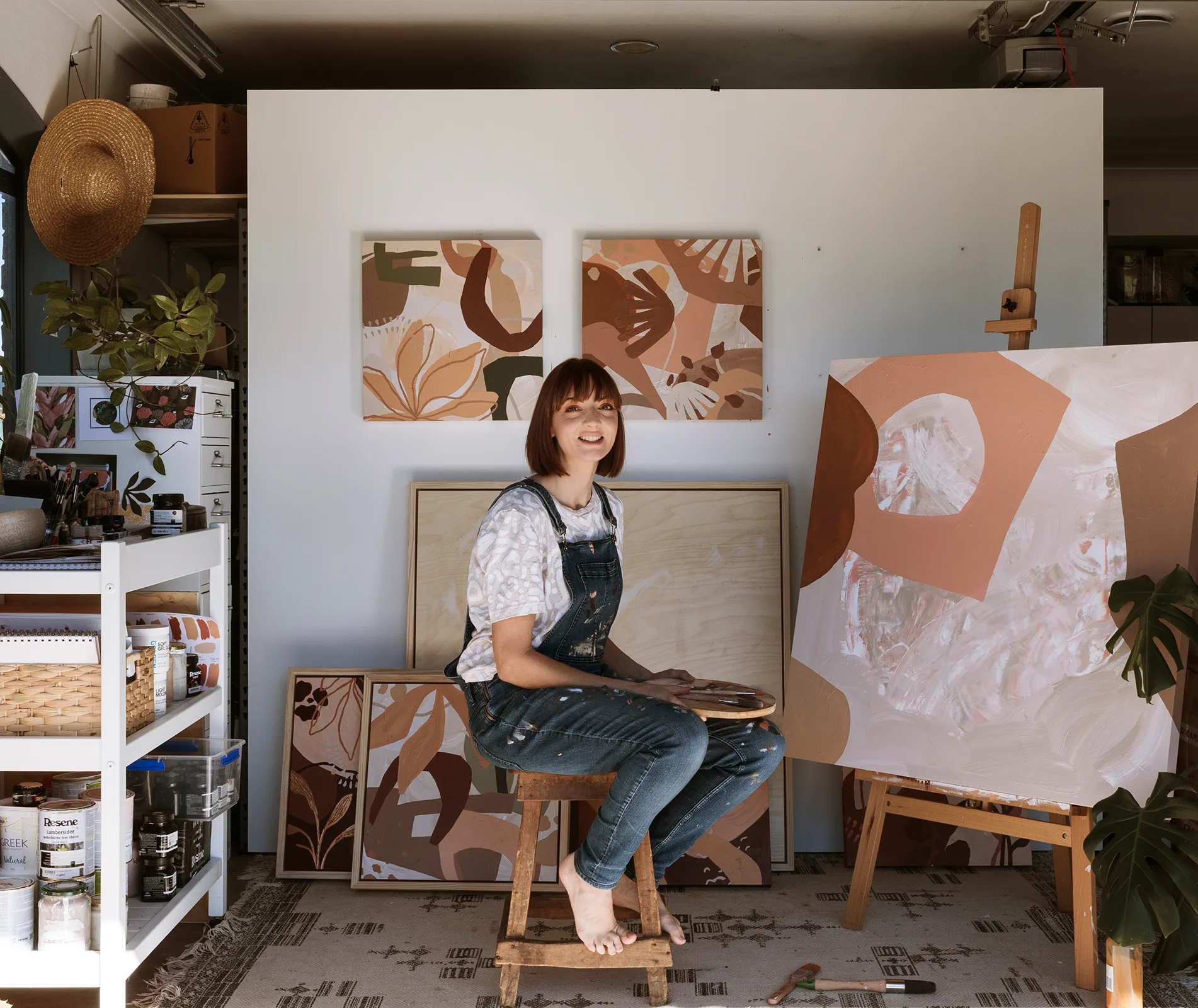
When did you start painting? My husband bought me a huge panel of plywood and encouraged me to “paint my heart out” after I’d mused a few too many times that I’d like try painting. In hindsight, what I painted was actually really awful. I ended up painting the other side of the panel last year, so my first painting is still hiding in the back of our lounge. One of our movers asked if Ivy [Jasmine’s two-year-old daughter] had painted it! But I am so glad to have a reminder of how I started my painting journey.

When did you paint your first big mural? After painting the big piece of ply my husband bought me, I found the confidence to pitch a concept to Creative Bay of Plenty, who were looking for a local artist to paint a mural. They loved it, which led to painting my first mural in September 2018 in Tauranga. This project changed everything for me. It made me realise I could apply my textile design methods on a larger scale – and it blew my mind. I’ll never forget the feeling of standing in front of 15 square metres feeling overwhelmed and not quite sure where to begin.
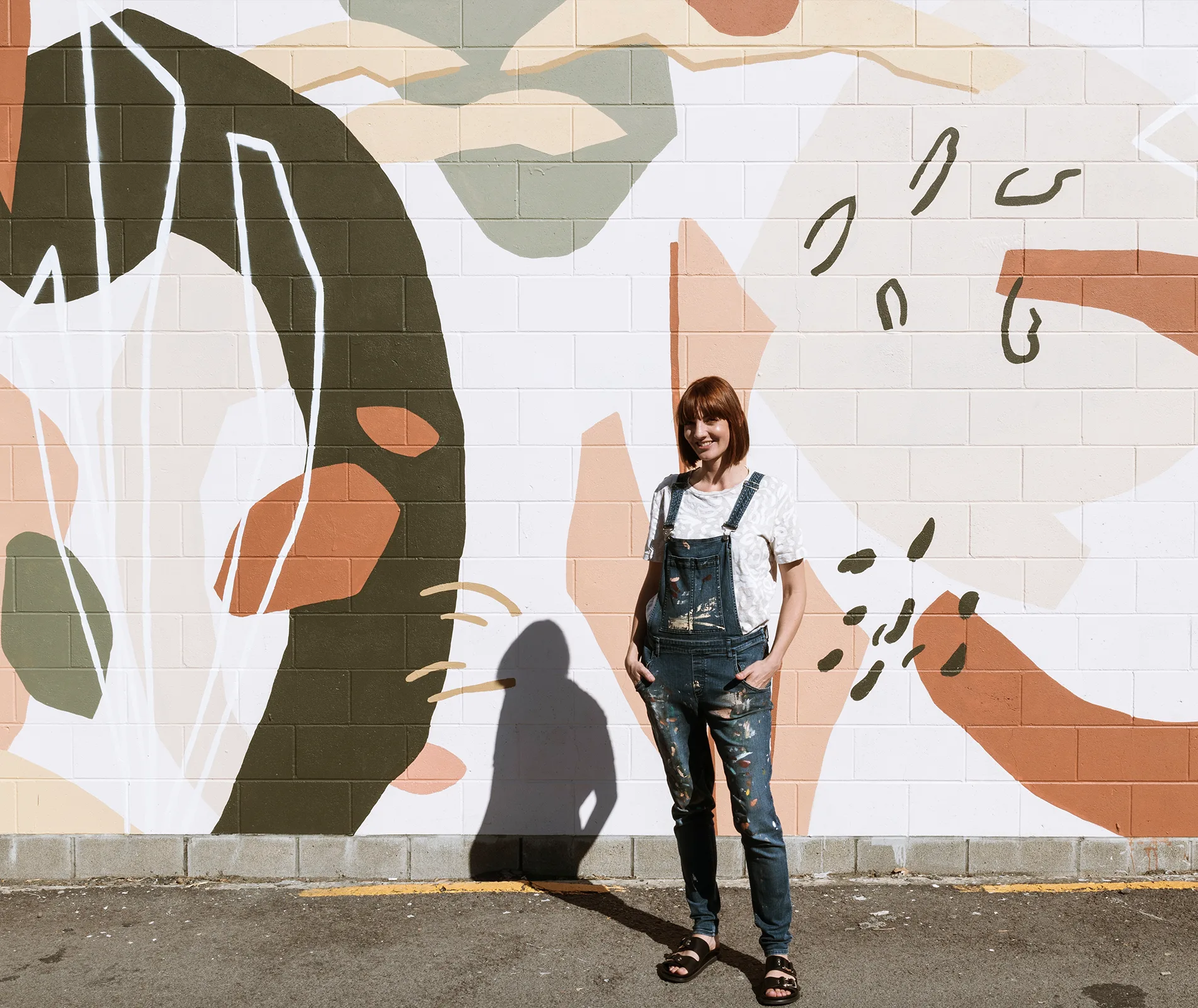
How do you plan out a mural that big? I use the same technique that I do for my textile designs. I use paper collage and hand-drawn elements. Most of the time I create them around A4 size, then I digitise them. Next, I play around with scale, composition and colour in Adobe Illustrator. I also Photoshop my design on the wall to get a feel for the design and help the client visualise the end product.
What other murals have you done since then? I have a few under my belt now. My most popular one is in Mt Maunganui, which I did for the Street Prints Mauao festival 2020. It took over a week and was twice the size of the first mural I did. This design led me to my signature style and favourite colour palette.
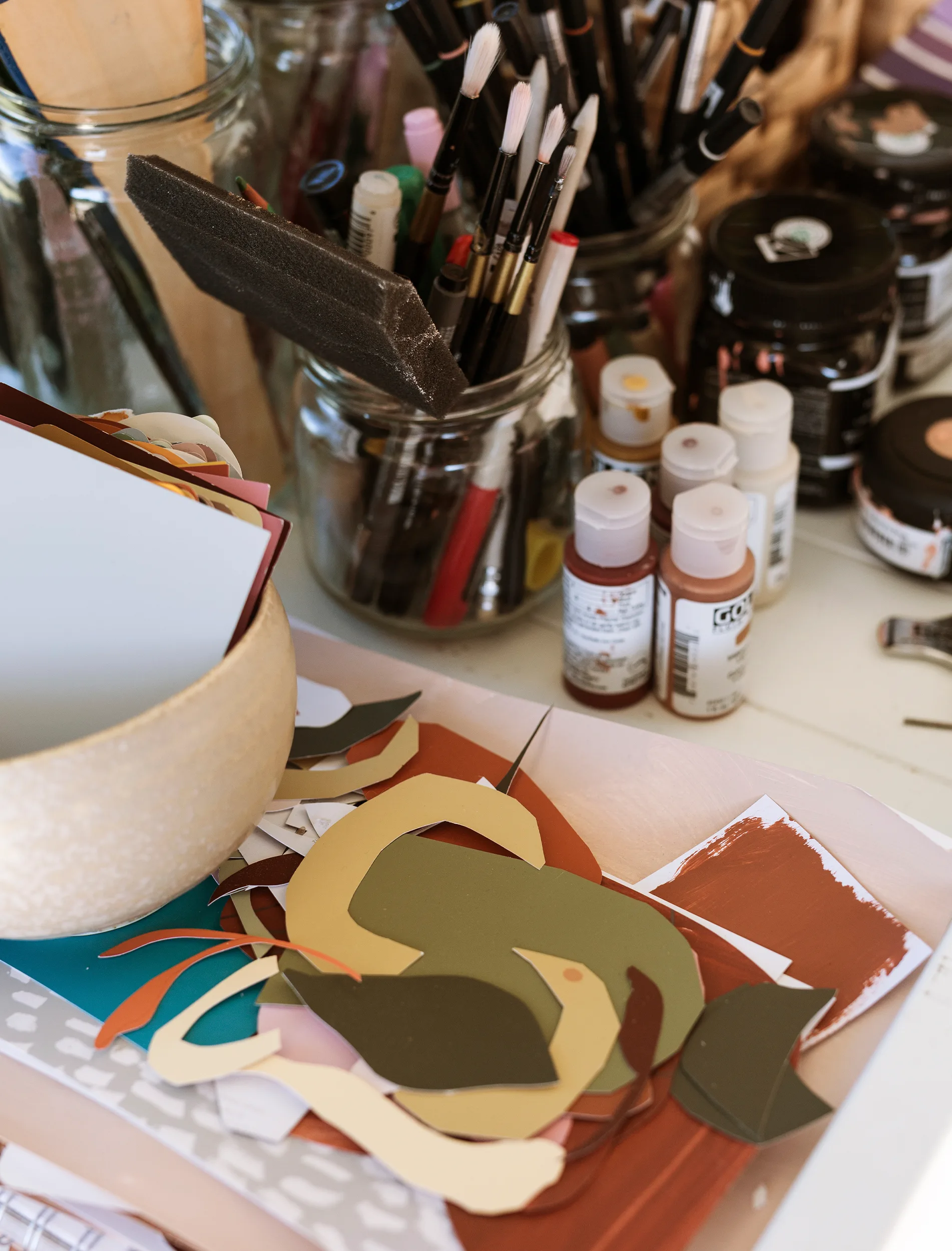
Talk us through the different techniques and applications you use for your art/prints. For original art, I start with a texture medium on the base and then work flat, pouring on a few colours and spreading them either with a brush or with a large screen-printing squeegee. This part is completely unplanned and entirely intuitive. Then, I’ll work out which bits in this base layer I like and which parts I want to hide. I then pop my boards up and begin building layers using different shapes and marks. I refer to my original collage composition a lot, but there’s also room for a bit of intuitive painting too.
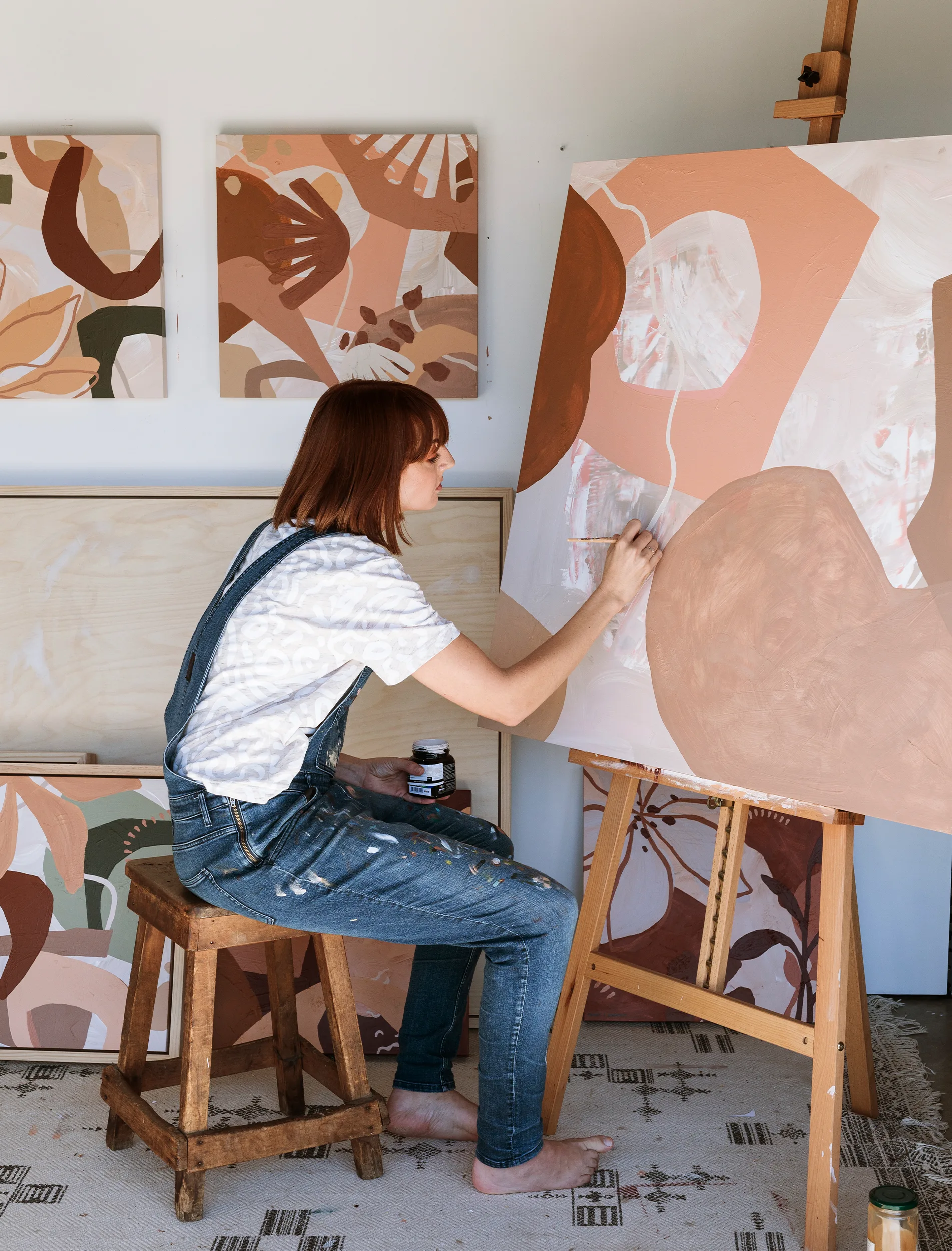
How many pieces do you work on at a time? I find it easier to work on a few pieces at the same time as I usually create a series of three or more pieces that use the same elements and colours. I love to work in series, maybe that’s another influence from fashion, being used to working in a ‘collection’.
How does your background in textile design influence your art? My art style wouldn’t be what it is without my background in textiles. The way I build layers and use shapes stems directly from my textile methods. I felt like a bit of an imposter about this initially, as there are many completely intuitive painters, but I’ve realised I just don’t function that way.
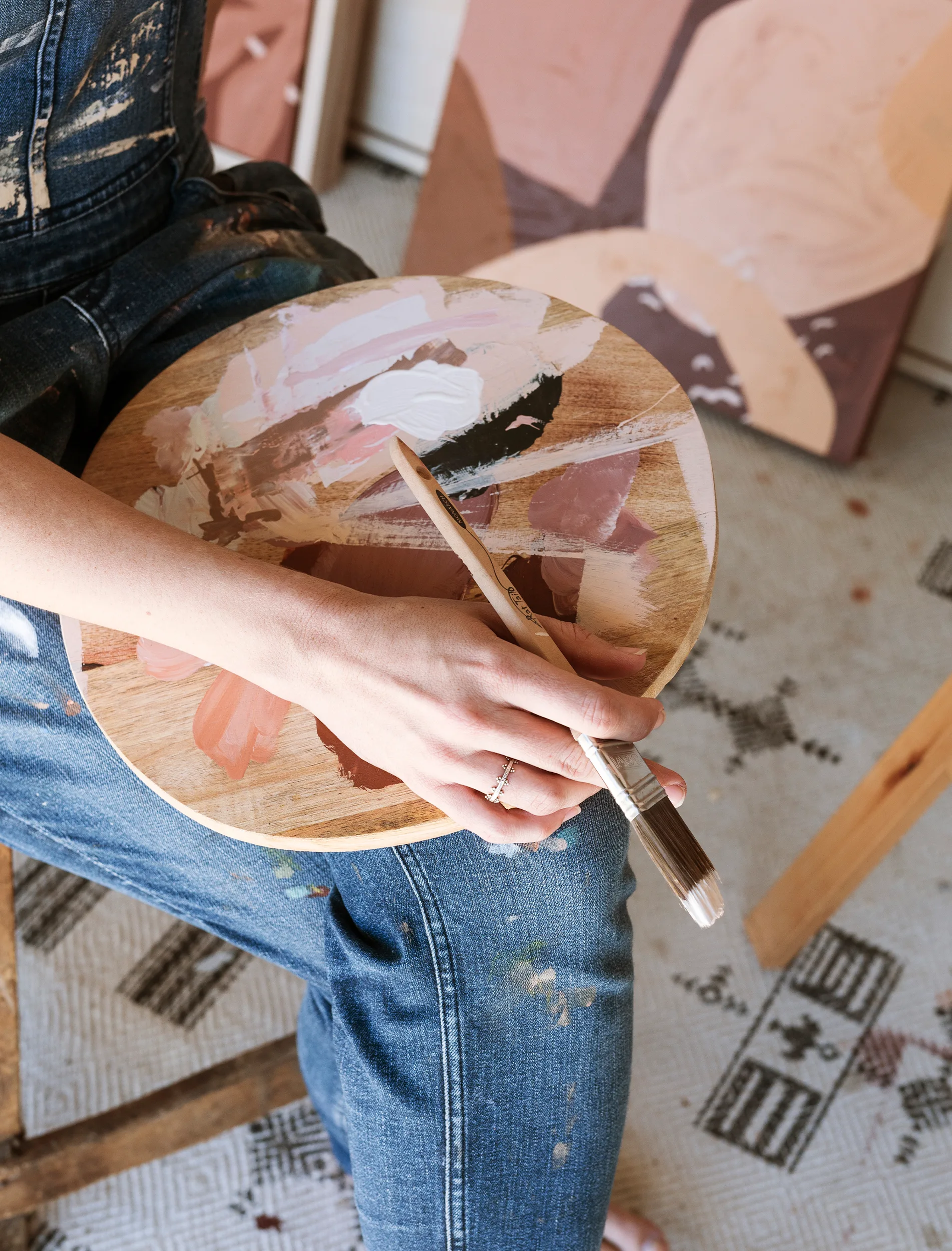
What is something about being an artist that no one tells you? There’s a lot of myths around needing a body of work before a gallery will take you on. I’ve now realised you just have to ask. Very rarely do opportunities just fall into your lap. I pitched to endemicworld [New Zealand art prints and originals, posters and graphics store] with my first three paintings I ever did (which I created in January 2021) and was so thankful to get a ‘yes’ to creating a series straight away.
What do you do when something goes wrong? The beautiful thing with paint is that you can just paint over it and start again.
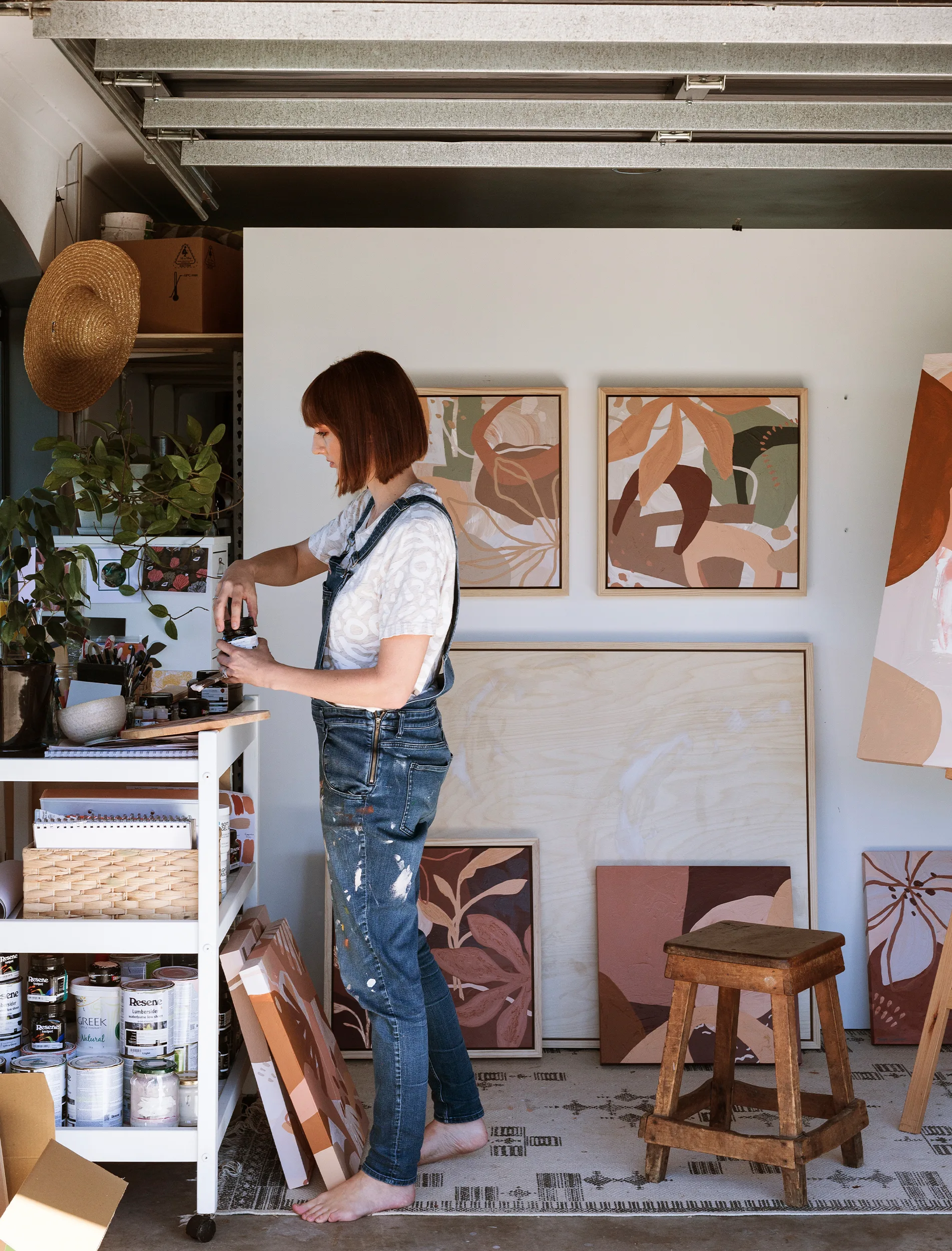
Tell us about the hidden artwork project you did in Papamoa? Over Easter weekend I created 10 pieces of mini original artworks, wrapped them up and hid them around the city. I released clues as to their whereabouts on Instagram. I called it the Easter Art Hunt. They were all gone within the hour. I got a message from every person who found one to say thanks, which I was beyond happy with.

How important is it to be active on social media as an artist? It’s incredibly important. The artist community I’ve discovered is beyond supportive and inclusive, and I have met the most amazing artists via Instagram. I’ve had people ask me questions and advice, which I’m always more than happy to dish out my 10 cents’ worth.
What advice would you have for someone who aspires to a creative career? Make the work that you want to rather than what you think people want.

Interview by: Bea Taylor. Photography by: Alice Veysey.
